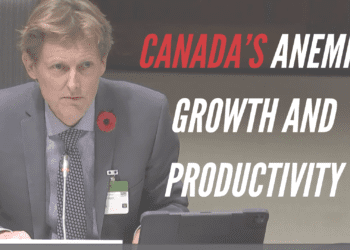In the Feb. 2015 edition of Inside Policy, the magazine of the Macdonald-Laurier Institute, 

Impact and benefit agreements and resource revenue sharing arrangements in places like Nunavut and the Northwest Territories are already making Aboriginals richer, he says.
“While Canadians are remarkably sanguine about the often-remarkable wealth accruing to real estate speculators, chief executive officers, entrepreneurs and professional hockey players, they have no shortage of opinions about Aboriginal prosperity, which many imply is unfair and unjust”, writes Coates.
By Ken Coates, Feb. 12, 2015
In the 1999 Marshall decision on Aboriginal fishing rights in the Maritimes, the Supreme Court of Canada declared that First Nations had the right to earn a “moderate income” from the commercial fishery. It was a strange decision, imposing imprecise limits on the earning potential of Indigenous fishers. While the rationale behind the earning limit is unclear, there appears to be a concern about Aboriginal people making too much money.
Indigenous business and political leaders often comment on the non-Aboriginal preoccupation with the incomes of Aboriginal people, whether it is from post-secondary education grants, salaries for chiefs and councillors, or the wealth of successful Aboriginal business executives. Note the nation-wide First Nations’ reaction to the fall 2014 implementation of federal legislation requiring the reporting of incomes for chiefs and councillors, which is a useful public policy tool but which has unleashed a torrent of public criticism of the small number of Aboriginal leaders people believe to be overpaid. This same sentiment shows up, sotto voce, in the discussions about resource revenue sharing. While Canadians are remarkably sanguine about the often-remarkable wealth accruing to real estate speculators, chief executive officers, entrepreneurs and professional hockey players, they have no shortage of opinions about Aboriginal prosperity, which many imply is unfair and unjust. That the wealth is typically held collectively, rather than individually, also troubles many non-Aboriginal observers, for it runs counter to the dominant Canadian ethos.
Get over it, Canada. Indigenous Canadians are getting a great deal wealthier than in the past. Many of the larger impact and benefit agreements and the most substantial revenue sharing arrangements, like those in the Northwest Territories and Nunavut, already produce hundreds of millions of dollars in cash and other benefits for First Nations and Inuit communities.
The country is going to see more of these companies assembling large pools of investment capital, which they will use to purchase land, support businesses, sustain local programming, and otherwise underwrite the work and lives of Aboriginal peoples. If resource revenue sharing succeeds, Aboriginal people will become substantially wealthier. And the best communities, like the most successful non-Aboriginal communities, will use the income to build even greater wealth and regional opportunity.
Aboriginal people will respond differently to the financial and commercial opportunities presented by resource revenue sharing. Some will, no doubt, come to rely on the income from the revenue, using the funds to supplement existing economic activity and government programs. Others will, in the spirit of Osoyoos, Fort McKay First Nation, Membertou, and others, use the funding to launch new businesses, create additional jobs, and drive their communities away from reliance on government transfer payments. The basic point is that resource revenue sharing will give Aboriginal peoples a great deal more money than they have at present, providing them with options, opportunities, and more financial autonomy than they have exercised in generations.
Some development corporations already have hundreds of millions of dollars. Inuvialuit Regional Corporation has more than $500 million in assets. Athabasca Basin Development has a turn-over of more than $100 million annually, much of it related to northern resource development.
A decade or two from now, as the number of successful Aboriginal businesses continues to grow, as more communities find their economic feet, and as more Aboriginal people find employment in Indigenous or non-Indigenous owned companies, there is a good chance that the fundamental relationships in this country will change. Wealth, communal or individual, does matter. Prosperity, elusive for generations, could make a real difference in the lives of Indigenous communities. With commercial and professional success, based in part on resource revenue sharing, Aboriginal people will have the opportunity to share in Canada’s overall well-being. When this happens – and these processes are already occurring in selected communities across the country – Aboriginal communities will likely have the social, cultural, and financial resources necessary to address the socio-economic challenges that are such a significant part of Indigenous life in Canada.
There is a quid pro quo in this situation. Aboriginal communities can expect push-back from Canadians who do not have access to collective wealth, generated by a legal or treaty regime that is not available to non-Indigenous peoples. Put aside for a time questions of legal and political rights and focus on questions of public perception. To some non-Aboriginals, that Indigenous peoples are gaining financial and other resources at the same time that their demands and needs for government assistance are greater than ever, is worrisome. For the system to work going forward, Aboriginal governments are going to have to get comfortable with standard rules on accountability.
Ken Coates is Canada Research Chair in Regional Innovation at the Johnson-Shoyama Graduate School of Public Policy in Saskatchewan and a Senior Fellow with the Macdonald-Laurier Institute. His most recent MLI paper is titled Sharing the Wealth: How resource revenue agreements can honour treaties, improve communities, and facilitate Canadian development.




